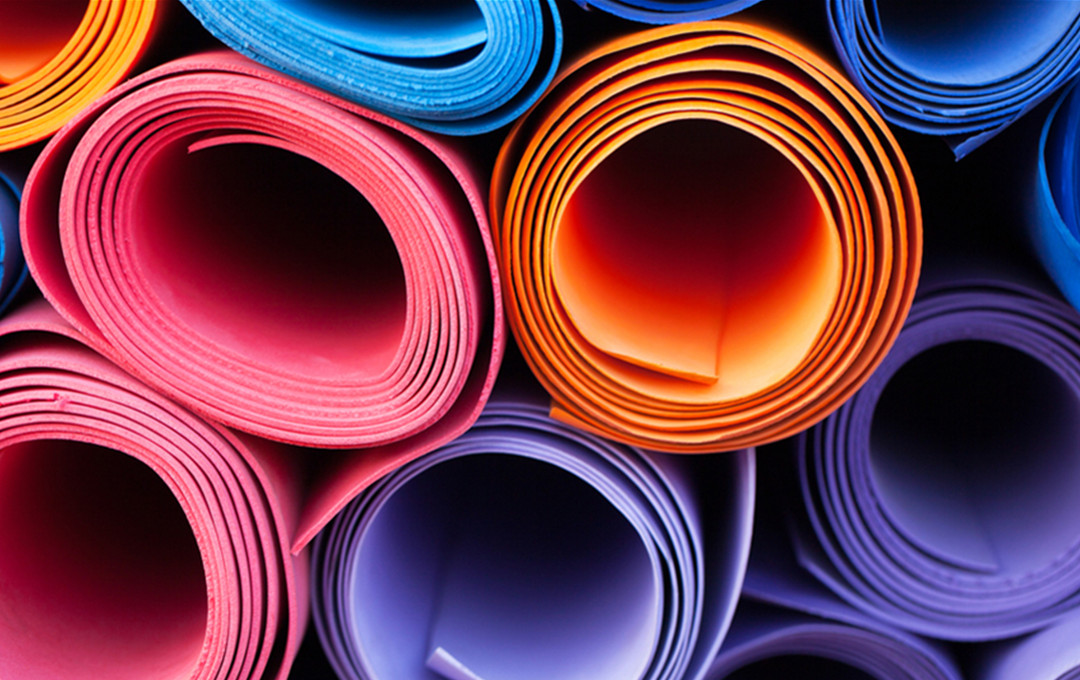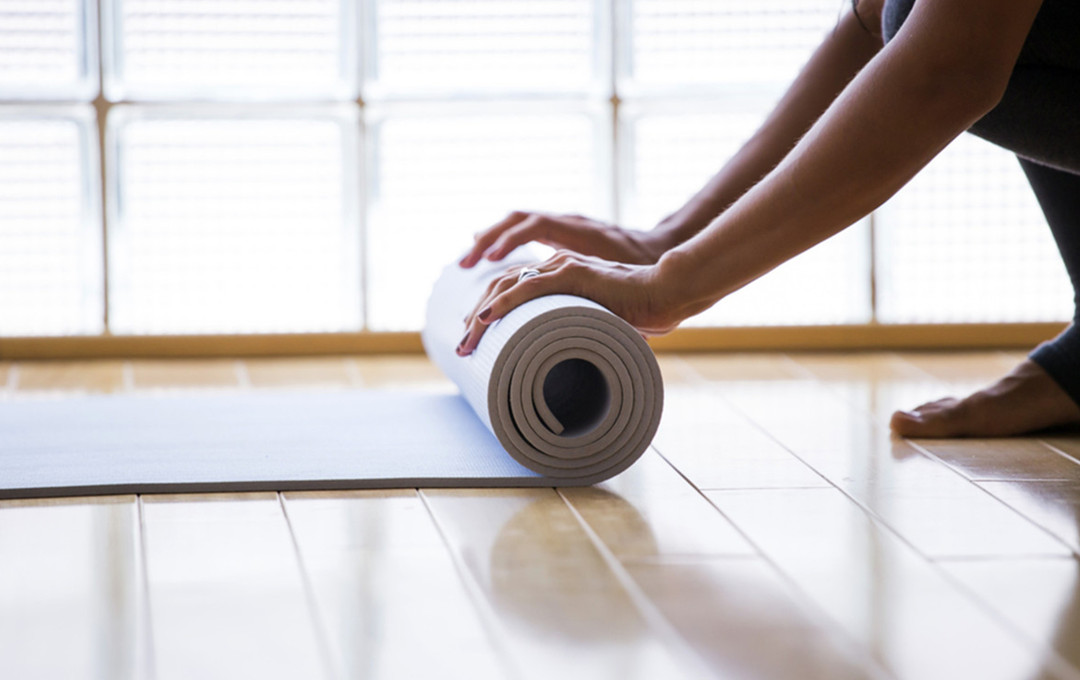The mats are made in different thicknesses and come in a variety of colors, though some brands only sell the mat in one color. The common wisdom is to buy a mat that is 3mm or more thick for optimal comfort when performing yoga exercises. However, if you intend on doing floor exercises such as push-ups and sit ups on your mat, you might want to opt for a thicker mat.
There are also varying degrees of stickiness; some brands offer mats with high traction while others offer mats that can still provide traction but will not be as hard to move around on. Mats with less slip tend to be more expensive than those with more slip.
The most expensive mats also tend to be the most sticky; however, there are brands that offer a high level of stickiness at an affordable price point. There are also mats with varying degrees of grip that allow you to perform exercises that focus on core strength and balance by alternating your grip on the mat during different poses.
 The material your yoga mat is made in a way it can affect your workout and how comfortable you are while doing it. The texture helps with grip, especially when performing certain poses that require the hands and feet to be planted on the ground. A sticky or textured mat can increase your grip and prevent injuries such as foot or knee strain.
The thickness of the mat is another factor that affects how comfortable you are while performing a yoga routine. A thicker mat provides more comfort from being on the floor, especially for long periods of time. However, if it is too thick, it might be harder to balance and do certain poses.
Once you start practicing Yoga, you’ll soon discover that no two mats are alike. Some mats feel better to the touch, while others provide more grip when in use. A good rule of thumb is to ask an instructor what type of mat they recommend before purchasing one for yourself so you can get out and practice and begin enjoying the benefits of Yoga.
The material your yoga mat is made in a way it can affect your workout and how comfortable you are while doing it. The texture helps with grip, especially when performing certain poses that require the hands and feet to be planted on the ground. A sticky or textured mat can increase your grip and prevent injuries such as foot or knee strain.
The thickness of the mat is another factor that affects how comfortable you are while performing a yoga routine. A thicker mat provides more comfort from being on the floor, especially for long periods of time. However, if it is too thick, it might be harder to balance and do certain poses.
Once you start practicing Yoga, you’ll soon discover that no two mats are alike. Some mats feel better to the touch, while others provide more grip when in use. A good rule of thumb is to ask an instructor what type of mat they recommend before purchasing one for yourself so you can get out and practice and begin enjoying the benefits of Yoga.
 The material your yoga mat is made in a way it can affect your workout and how comfortable you are while doing it. The texture helps with grip, especially when performing certain poses that require the hands and feet to be planted on the ground. A sticky or textured mat can increase your grip and prevent injuries such as foot or knee strain.
The thickness of the mat is another factor that affects how comfortable you are while performing a yoga routine. A thicker mat provides more comfort from being on the floor, especially for long periods of time. However, if it is too thick, it might be harder to balance and do certain poses.
Once you start practicing Yoga, you’ll soon discover that no two mats are alike. Some mats feel better to the touch, while others provide more grip when in use. A good rule of thumb is to ask an instructor what type of mat they recommend before purchasing one for yourself so you can get out and practice and begin enjoying the benefits of Yoga.
The material your yoga mat is made in a way it can affect your workout and how comfortable you are while doing it. The texture helps with grip, especially when performing certain poses that require the hands and feet to be planted on the ground. A sticky or textured mat can increase your grip and prevent injuries such as foot or knee strain.
The thickness of the mat is another factor that affects how comfortable you are while performing a yoga routine. A thicker mat provides more comfort from being on the floor, especially for long periods of time. However, if it is too thick, it might be harder to balance and do certain poses.
Once you start practicing Yoga, you’ll soon discover that no two mats are alike. Some mats feel better to the touch, while others provide more grip when in use. A good rule of thumb is to ask an instructor what type of mat they recommend before purchasing one for yourself so you can get out and practice and begin enjoying the benefits of Yoga. 
